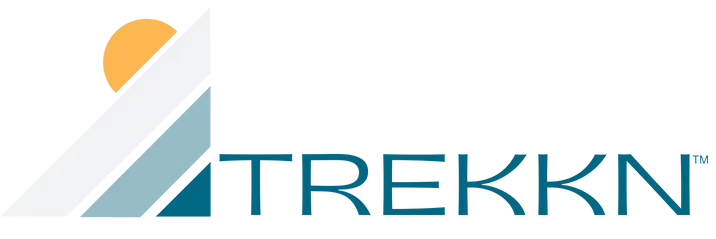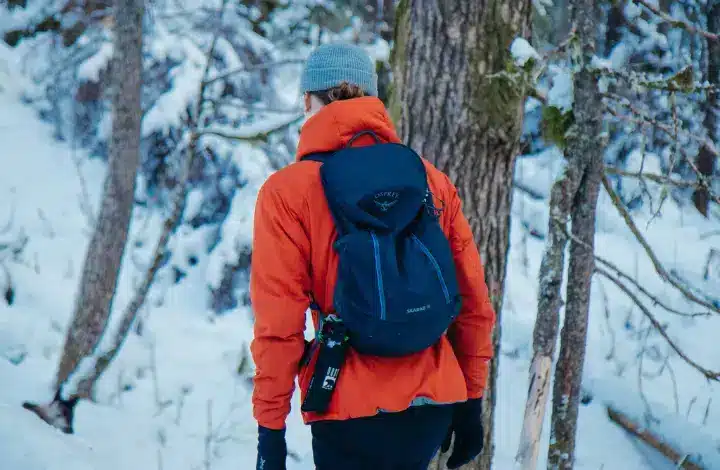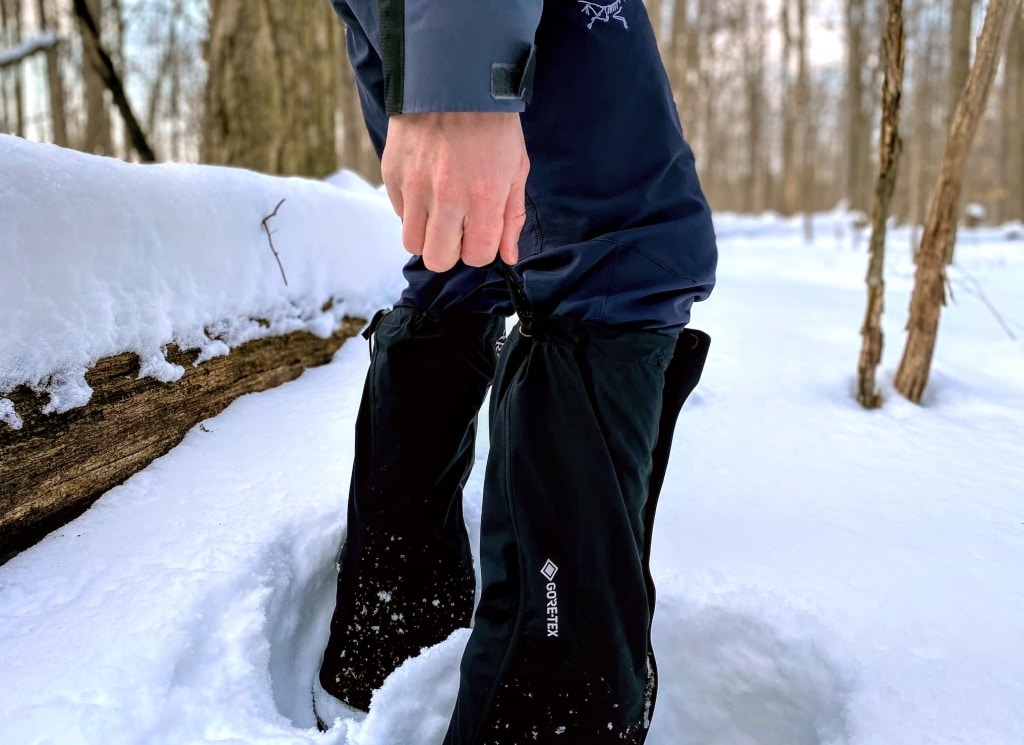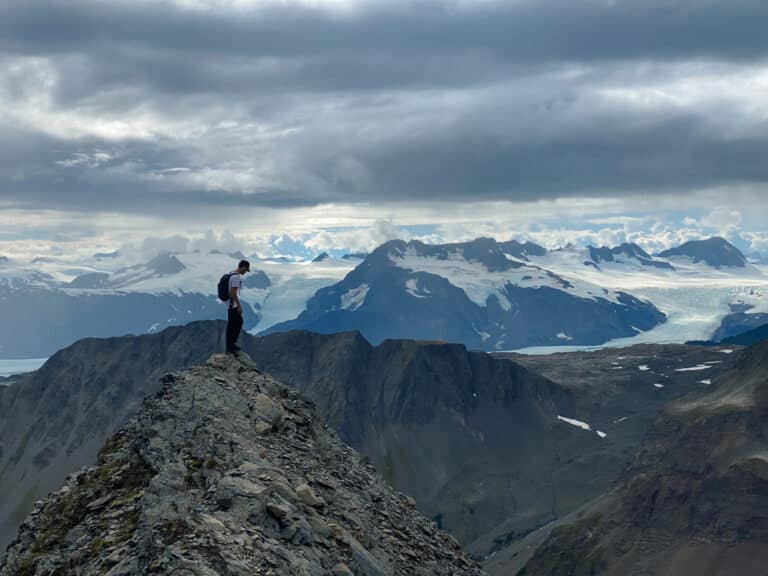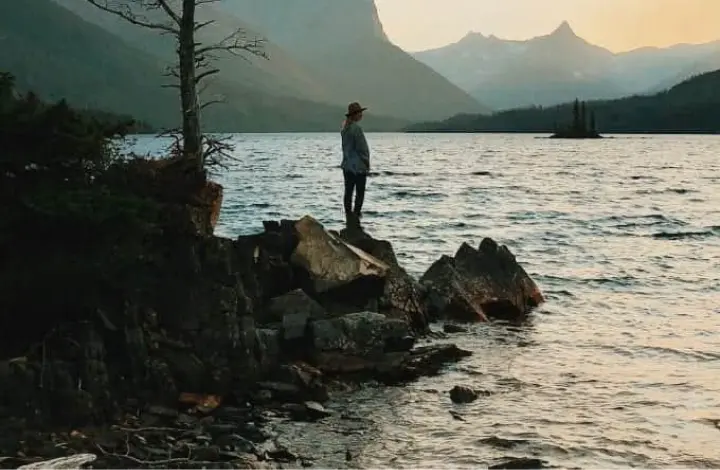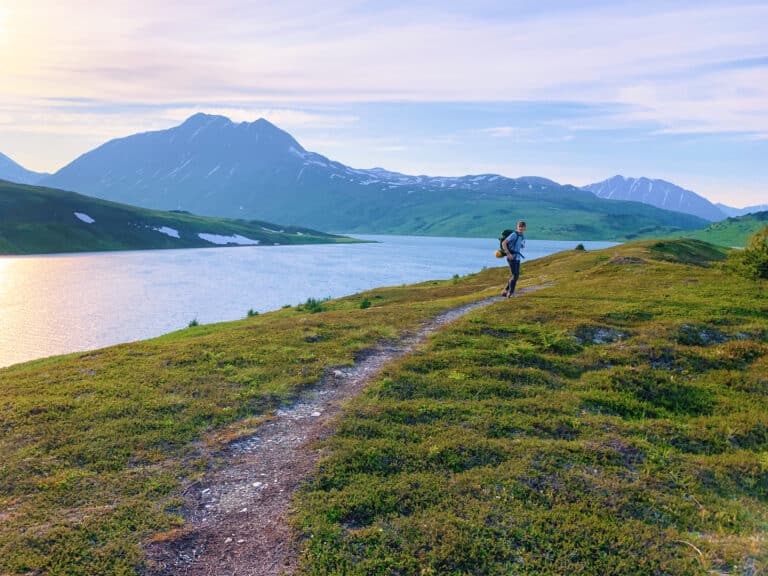Lace Up & Explore: Essential Gear for Winter Hiking
Just because the temperatures drop and a fresh layer of snow covers the ground doesn’t mean your outdoor activities need to stop. In fact, some would argue that winter is the best time of year to explore the great outdoors. To enjoy the season, be prepared with the essential winter hiking gear.
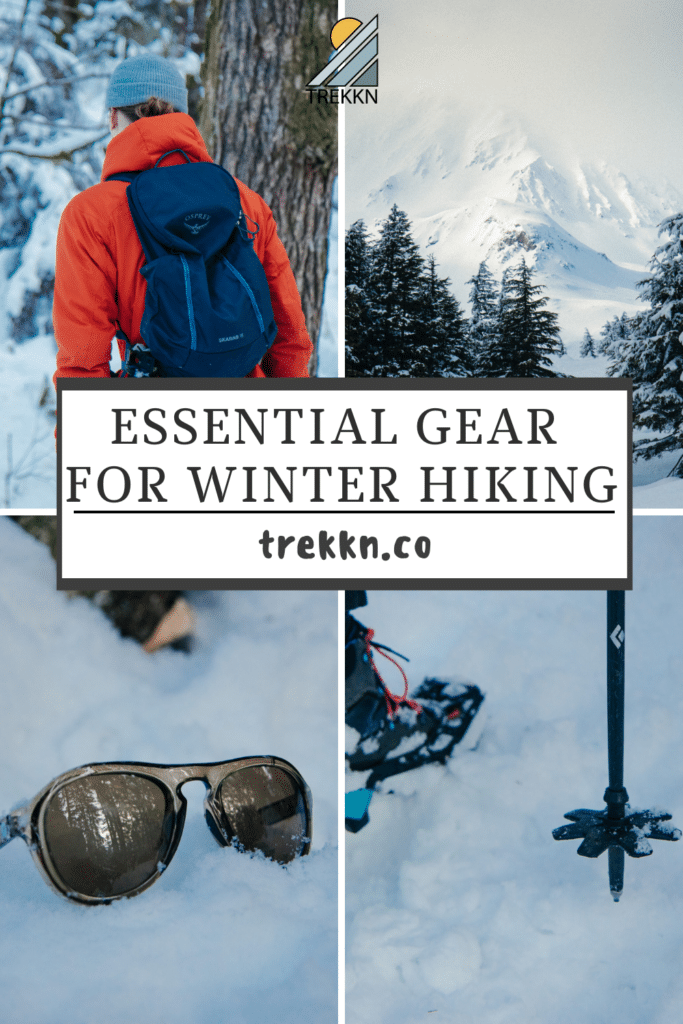
Whether it be skiing, snowshoeing, or winter hiking, getting outside is a great way to avoid cabin fever and dispel some of those winter blues. Now I do understand it can be daunting when you first realize the amount of preparation required. But in reality, winter hiking can be great fun when you have the right gear.
Indeed, when your winter hiking gear helps keep you safe and comfortable, you may look forward to getting on the trail during those cold months as much as (if not more than) spring and fall.
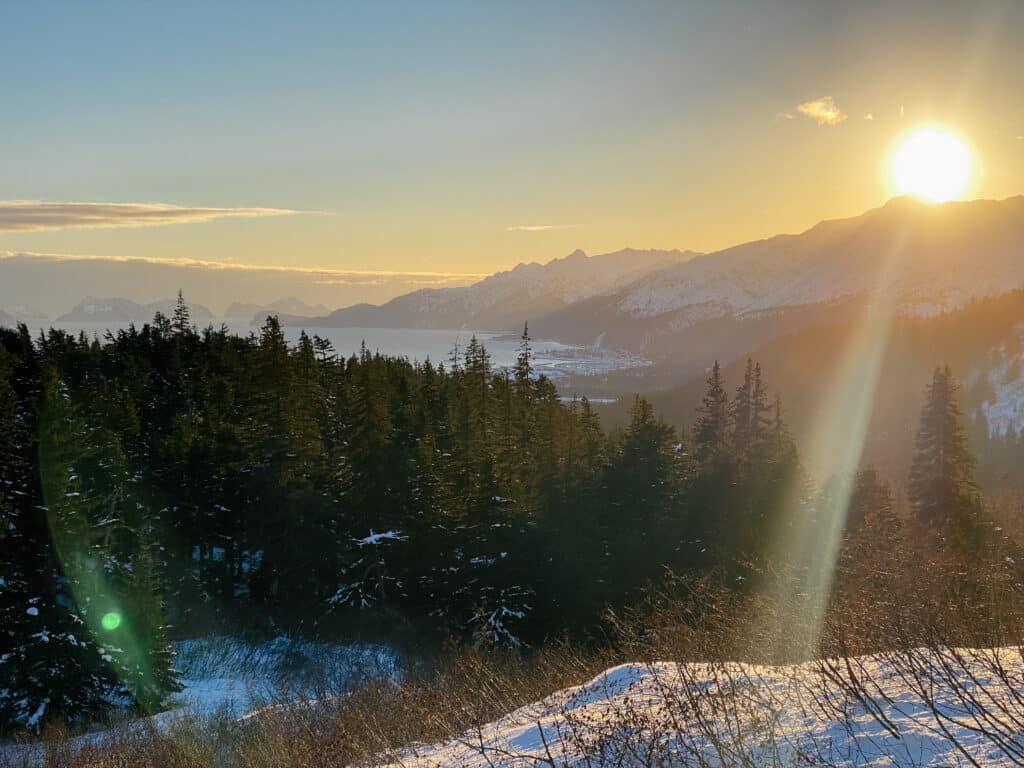
Advantages of Hiking in Winter
Before we dive into the necessary gear, let’s talk about why you should consider exploring the outdoors during the chilly months of winter.
The advantages of hiking in the winter include:
- Considerably fewer crowds
- A unique perspective of the landscape
- Bugs are non-existent
- Boost your mood during winter blues
- Enjoy the outdoors year-round
- Get to use fun gear
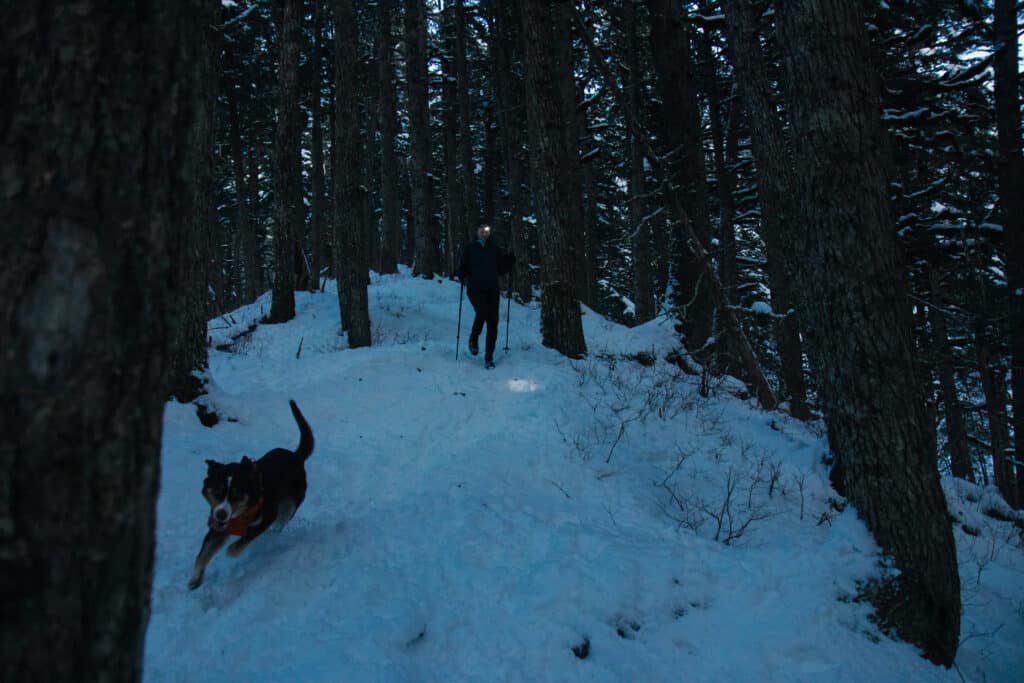
How to Prepare for Winter Hiking
First Step: Research Your Chosen Trail
Hiking in winter comes with its own unique challenges that call for specialized gear to aid you on your way.
How to prepare for the hike and ensure you carry the right supplies will depend on the conditions you expect to encounter. Accordingly, the first step to take before every winter outing is to research the trail.
As the saying goes, knowledge is power. In this case, knowledge may be considered a bit of “essential gear” that’s just as important as the tangible supplies.
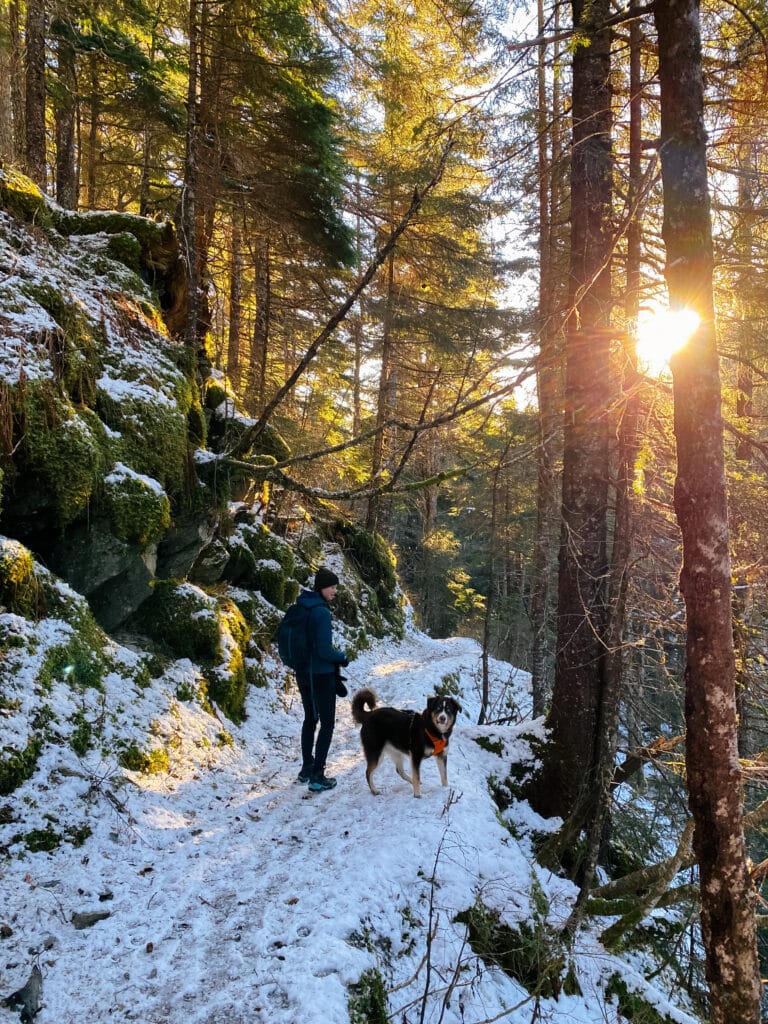
The first place I always check when I’m setting out on an unfamiliar trail is AllTrails. The site offers invaluable information, such as the length and difficulty of the hike as well as other helpful tips like current trail conditions.
Check hiker reviews about the specific trail for any comments. If someone else has recently hiked there, you will benefit from their insights and tips.
TRAILHEAD AND PARKING
Other useful information such as parking tips or how to find the trailhead can be gleaned from AllTrails reviews.
Other than AllTrails, a simple Google search of the trail may provide some useful information as well. You may need to spend more time searching for the specific trail, but in general the idea is to be prepared. Having as much knowledge as possible is a tool for helping to ensure you enjoy a safe hike.
After you finish you research, the next step is to gather the gear.
The Most Important Rule: Stay Dry
If you’ve heard anything about hiking in the winter, chances are you have heard this rule before.
Keep in mind this is not only about carrying a change of socks in case your feet get wet when wading into a stream or having a parka for adverse weather. Rather, the greatest threat to you staying dry is due to how your body regulates temperature.
SWEAT IS YOUR GREATEST ENEMY
Activities such as winter hiking require the body to exert a lot of energy. The energy you are burning will cause your body to increase in temperature, eventually reaching a point when it can no longer hold in all of the heat produced.
As you hike along, your body will naturally feel the need to dump any excess heat through the means of sweating. Sweat, when winter hiking is concerned, is the enemy.
To minimize the effect that sweat can have while winter hiking, a hiker should wear specific, specialized layers made out of moisture-wicking materials.
Related Reading: The Importance of Layering For Outdoor Winter Activities
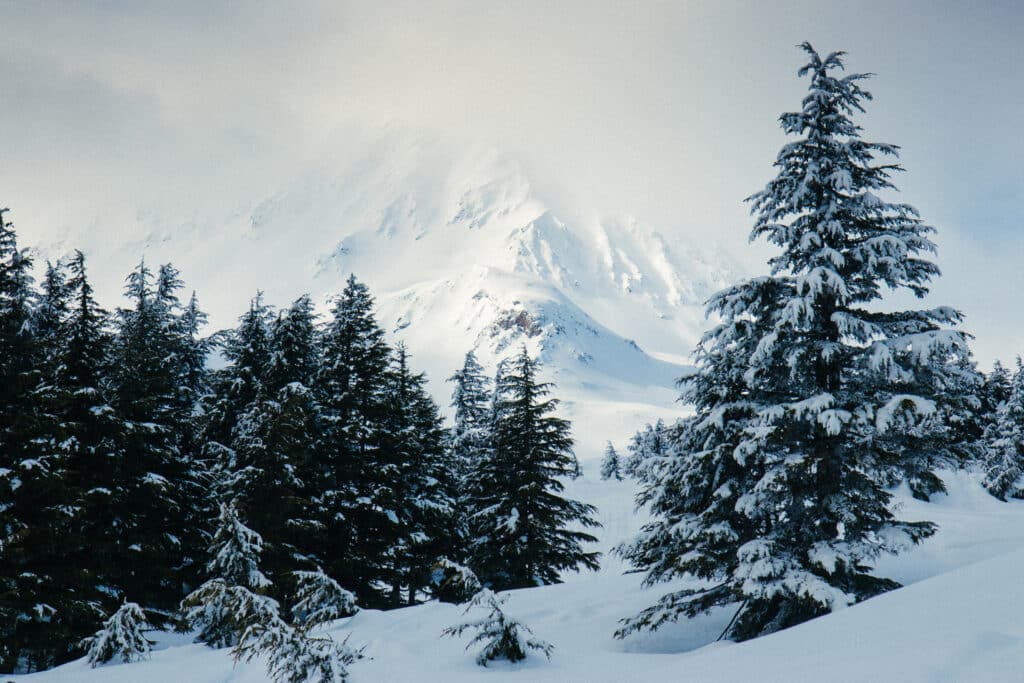
DO NOT WEAR COTTON WHEN HIKING
Someone unfamiliar with the principles of layering may simply pile on layer after layer of cotton clothing in the hopes of fending off the cold. A cotton t-shirt under a cotton sweater under a cotton hoody is not the right solution.
As they hike, and as their body temperature rises, the sweat they produce will have no other choice than to soak into those cotton layers.
Cotton is notoriously awful at wicking away moisture and excellent at absorbing it. Once this has happened, it’s usually too late to do anything about it.
Moreover, cotton takes a relatively long time to dry. As a result, a hiker wearing cotton will have to deal with moisture for the rest of the hike. And as soon as they stop to rest, they will feel the consequences. Sweat-soaked garments in winter cools the body’s core temperature at such a rapid rate that it can quickly become dangerous and even life-threatening.
There’s a saying in the outdoor community that concisely explains why to avoid cotton: “Cotton Kills”.
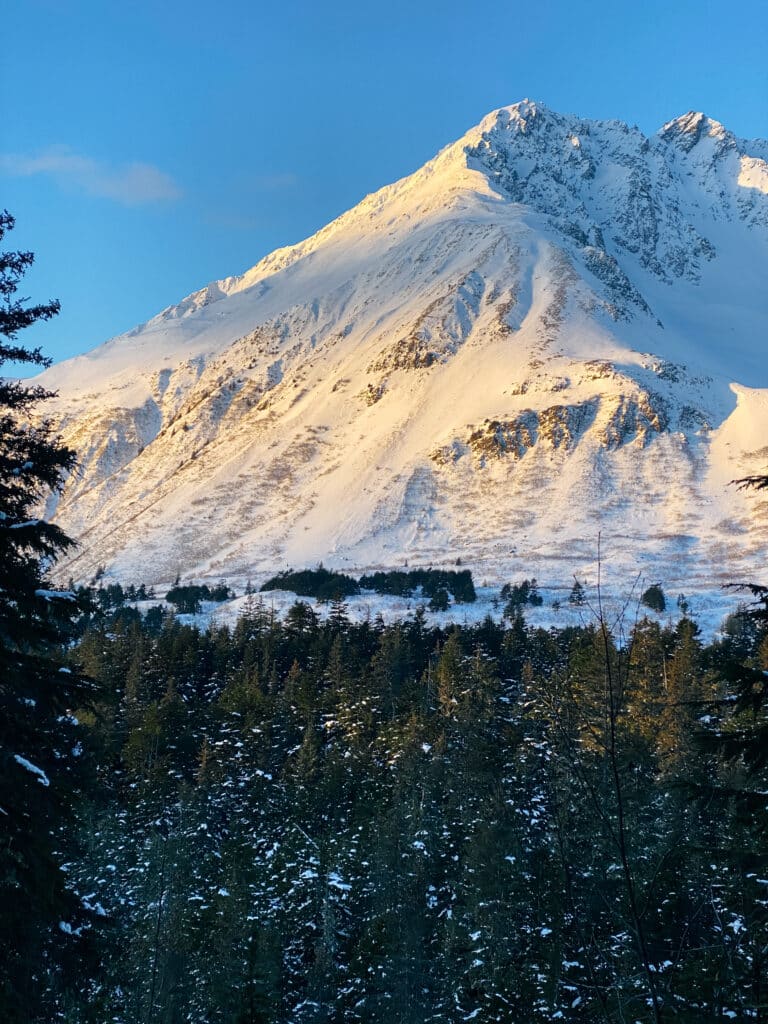
What to Wear When Hiking in Winter
The most crucial component of a hiker’s arsenal of gear is the clothing they wear. Having the appropriate layers can be the difference between enjoying your hike and having a miserable time.
Clothing Layers for Cold Weather Hiking
To experience maximum comfort on the trails in the winter, follow important guidelines for wearing the right clothing layers.
As a quick overview of basic layering principles, your winter wear should include:
- A base layer to wick away moisture (preferably made of merino wool)
- Mid-layers to trap in body heat (can consist of a lightweight synthetic fleece layer and/or an insulated puffy jacket)
- A shell layer to protect against the elements (either a hardshell or soft shell)
- Other pieces of gear such as layers of gloves, a beanie, and moisture-wicking socks
As long as you follow these general guidelines, adjusting the layers you bring according to the conditions expected, you will not have to worry about staying comfortable while winter hiking.
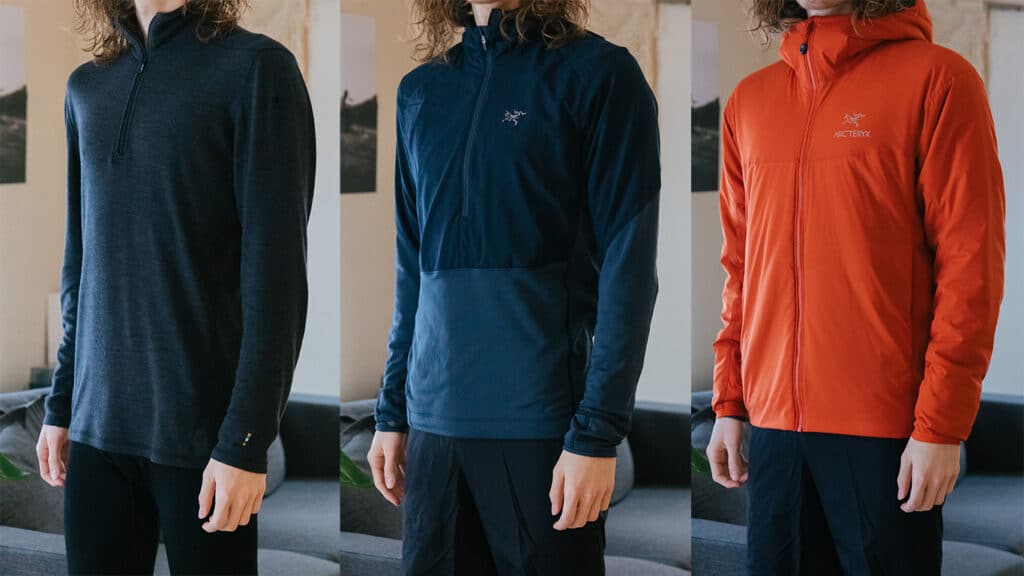
Your clothing may be the most important component of your arsenal, but it is by no means the only thing necessary to have a successful day on the trail.
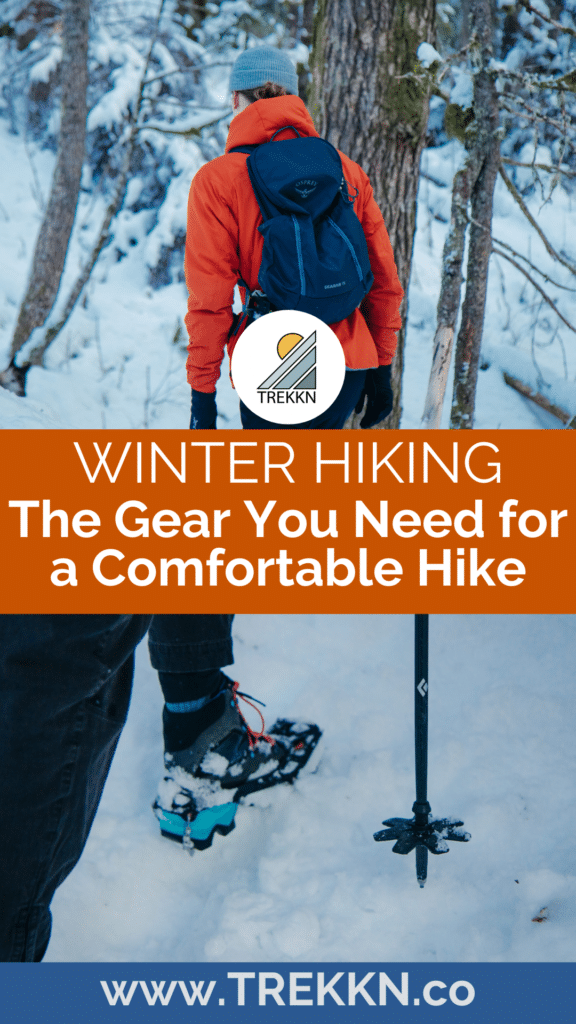
Buy the Best Winter Gear You Can Afford
WATERPROOF FOOTWEAR
At the very least, you will need to invest in some footwear that doesn’t allow water to soak through to your feet. Having wet feet on a cold winter day is a recipe for disaster.
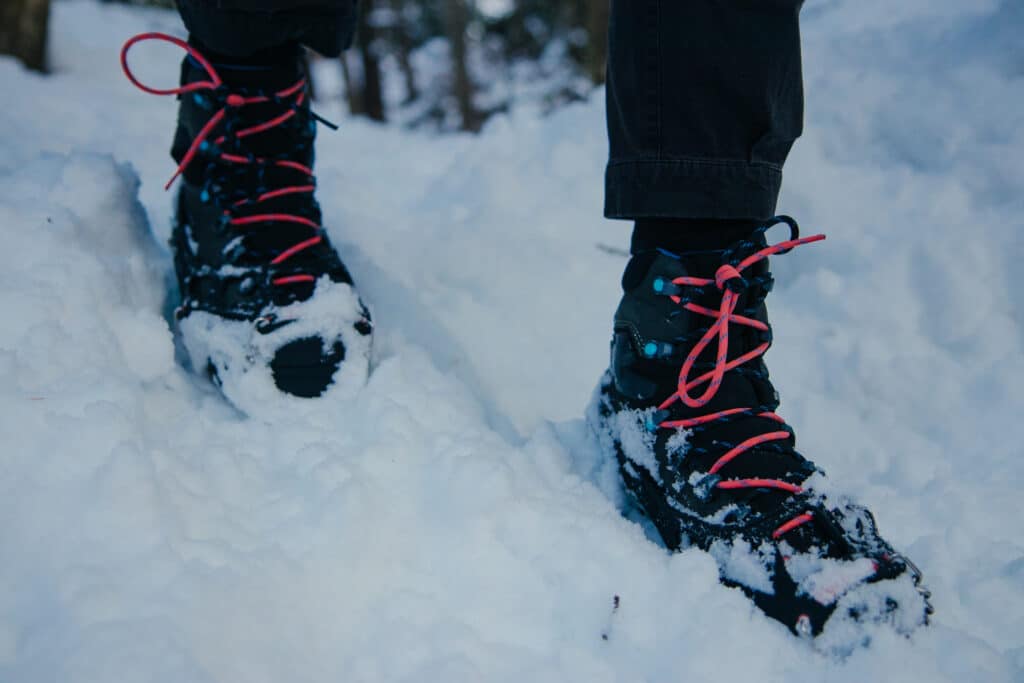
Many different brands, from Salomon to Arc’teryx to Scarpa, make hiking boots out of materials such as GORE-TEX or other brand-specific waterproof membranes to keep out moisture.
Look for a durable water repellent on the outer layer to ensure that water beads up on the boot rather than saturating the material. Paring thick mountaineering socks with a waterproof boot may be all you need to fend off the cold.
However, if this is the route you take, make sure to get your boots in a size that allows you to wear thicker socks without the boot squishing any part of your foot. It doesn’t matter how thick your socks may be, if your feet are compressed, their ability to stay warm is thrown out the window.
- Constructed of Nubuck leather
- Gore-TEX protection
- Established brand, Salomon founded in 1947
INSULATED HIKING BOOTS
For climates that are colder than average, or simply for someone who really values the comfort of their feet, opting to buy some insulated hiking boots that are also waterproof will undoubtedly be worth it.
Most insulated hiking boots are made with either 200g or 400g synthetic insulation, making sure your feet barely feel the threat of winter weather.
Keep in mind that boots with insulation are considerably heavier than those that are only waterproof. You will have to measure the pros and the cons according to your own personal preference.
HIKING GAITERS
Gaiters are securely strapped over the top of your boots to make sure that no snow or debris can enter from the top.
While it’s true that many boots make a fairly tight seal around ankles, having an extra layer of defense against the elements is great for peace of mind.
Hiking gaiters come in a variety of sizes and materials, each type made for a specific purpose. For winter hiking, choose a gaiter that is made out of breathable, waterproof material.
Depending on the amount of snow you are expecting to trudge through, you can choose a set that reaches anywhere from the lower calf all the way up to your knee.
There are also gaiters with their own lightweight synthetic insulation, made for conditions that require a greater amount of protection from the elements.
Waterproof gaiters made with Gore-TEX offer protection from snow, mud and ice. Check the size guide for the right fit.
MICROSPIKES FOR TRACTION
One of the biggest risks you face while winter hiking is losing traction on an ice- or snow-covered trail.
In certain circumstances, relying just on the traction built into the soles of your boots may make sense, but most of the time you will want to play it safe. Microspikes are the perfect tool for the job.
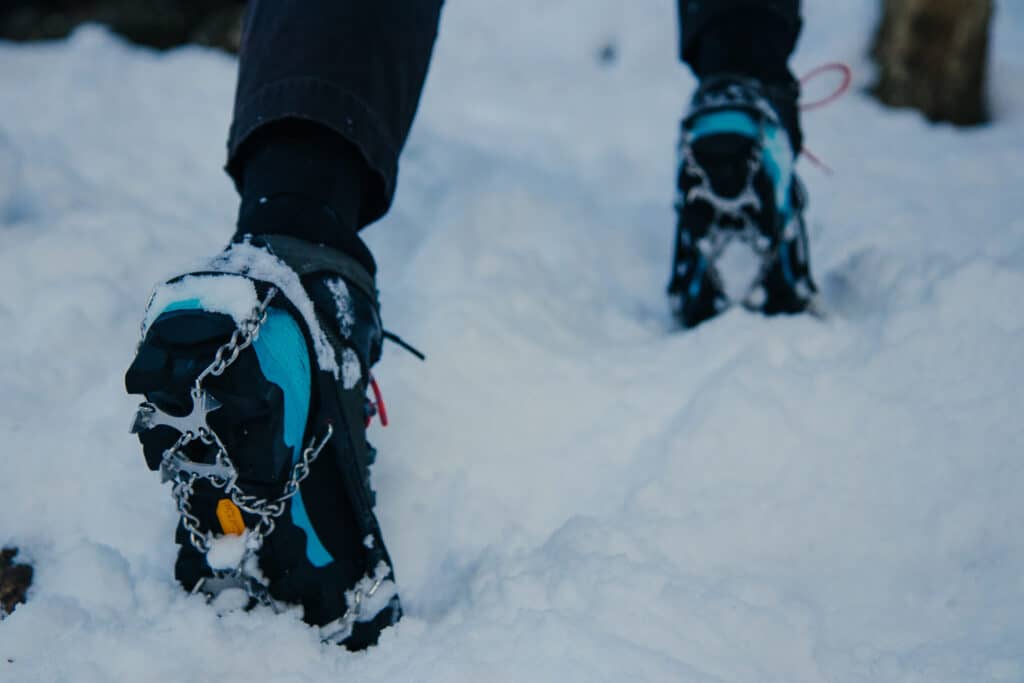
Once you strap on a pair of microspikes, your confidence when traversing sketchy sections of the trail will be much higher.
Microspikes come in a variety of designs, but the most popular option is a 12-spike system that is lightweight and flexible. Kahtoola MICROspikes are a very popular option.
Designed for hiking, backpacking, and trail-running during winter. Heat-treated stainless-steel and corrosion resistant spikes.
TREKKING POLES WITH SNOW BASKETS
Hiking through snow can be a pretty exhausting activity. Snow is not always a very stable surface to hike on, and ice is not much better, so you find yourself constantly working to keep your balance as you trek.
Trekking poles make keeping your balance a much easier task. The reason is because the poles help you maintain at least three points of contact with the ground, rather than only one to two.
In my personal experience, I always end up regretting the times when I don’t carrying trekking poles. That’s true when the trail conditions are even slightly wintery (or really it’s true in any conditions).
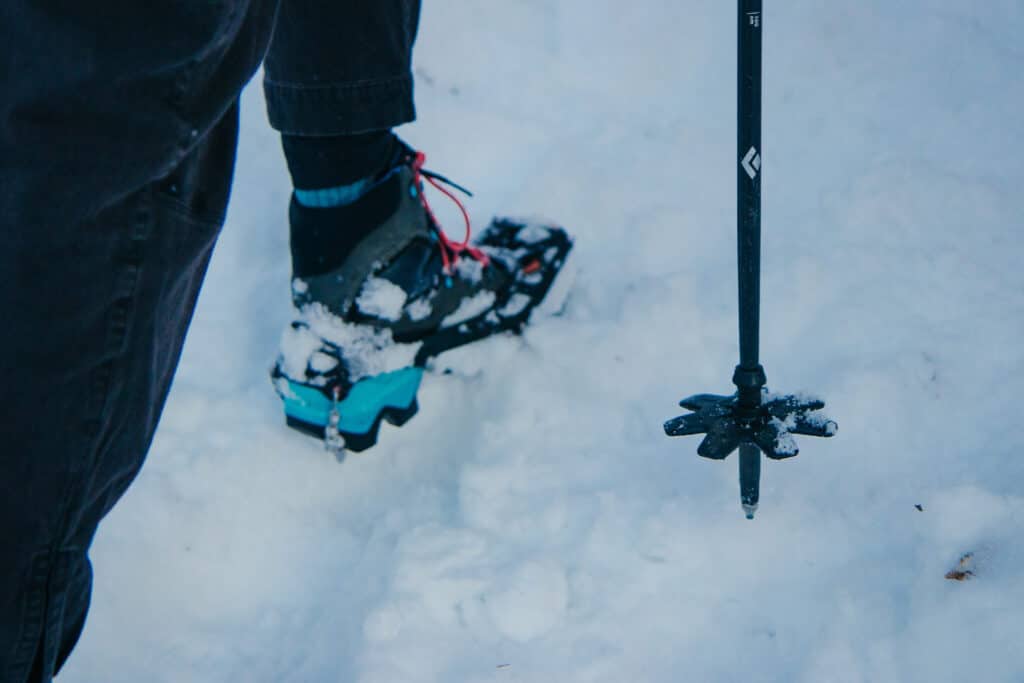
I recommend also carrying snow basket attachments that affix to the bottom of your trekking poles. With poles and baskets you should be ready for whatever the trail throws at you.
Without snow baskets, your trekking poles will plunge all the way down into the snowpack, canceling out any support they could offer.
NECK GAITER (NECK BUFF)
Serving as a sort of “backcountry scarf”, buffs are a great way to protect your neck, ears, and face from any harsh winter wind.
Buffs, also known as neck gaiters, are widely used for skiing and snowboarding and are equally useful for winter hiking and other outdoor activities during the cold season. Buffs are simply cylindrical pieces of fabric, usually made of materials such as polyester and merino wool.
I like to wear a buff around my neck. If the wind picks up, it’s easy to pull the buff up to protect my mouth, nose and ears.
SUNGLASSES AND SUNSCREEN
It may not be a sunny summer day, but don’t be fooled; the sun can be a powerful force even behind clouds when snow is in the equation.
Snow reflects a lot of sunlight, given its white nature, and that reflection can be less than pleasant if you don’t have anything to protect your eyes and skin.
If you are hiking in winter conditions with snow and wind, it may be worth it to grab a pair of snow goggles instead. Nobody enjoys having eyes full of snow, and the sharp wind just adds insult to injury.
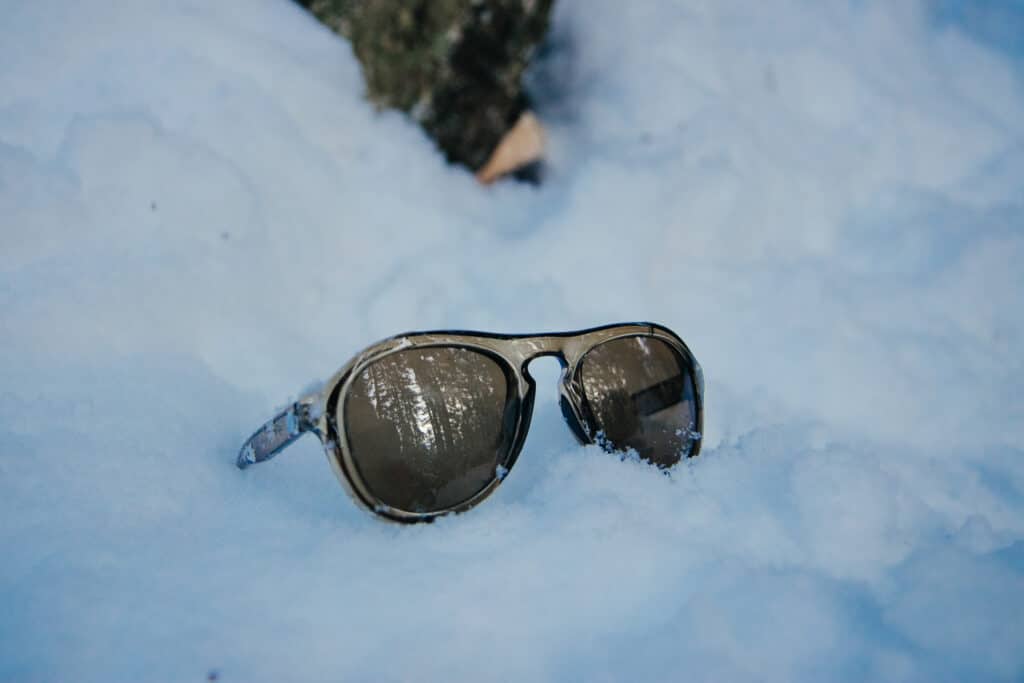
HEADLAMP
The season of winter doesn’t provide as much daylight as the rest of the year, unfortunately.
This is especially prevalent up here in Alaska, where our nearly endless sun in the summer dwindles down to a measly 4 to 5 hours a day.
Regardless of where you live, it can be easy to accidentally get blindsided by the setting sun once you’re out enjoying yourself on the trail.
Winter hiking in the dark is not an off-limits activity, but you surely don’t want to get trapped in the dark without adequate light sources.
Packing along a headlamp, and some extra batteries to go with it is a great way to stay prepared for a walk in the dark.
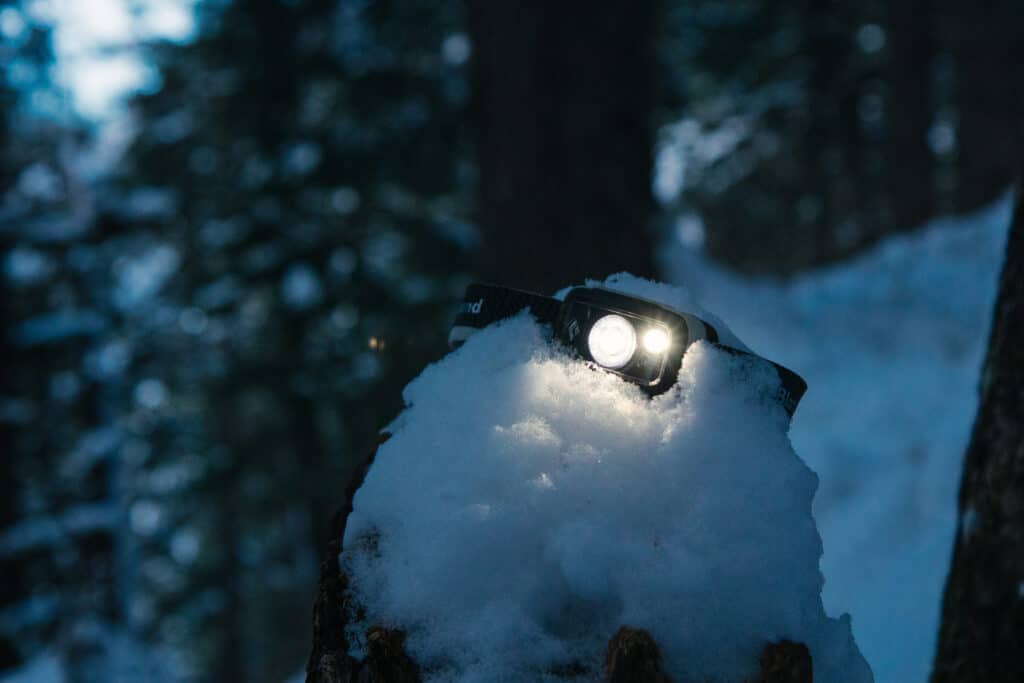
Even when you think there’s no way you will be staying out that late, I recommend always having a headlamp in your pack. It can save you from a miserable evening in the case of a miscalculated hike duration.
INSULATED WATER BOTTLE
In the summer I typically opt for using a water bladder, simply for ease of use. In the winter, however, that same water bladder will quickly freeze, getting rid of my one source of hydration. (I made that mistake once, but never again).
Nowadays I always pack an insulated water bottle to make sure I can stay hydrated no matter the temperature.
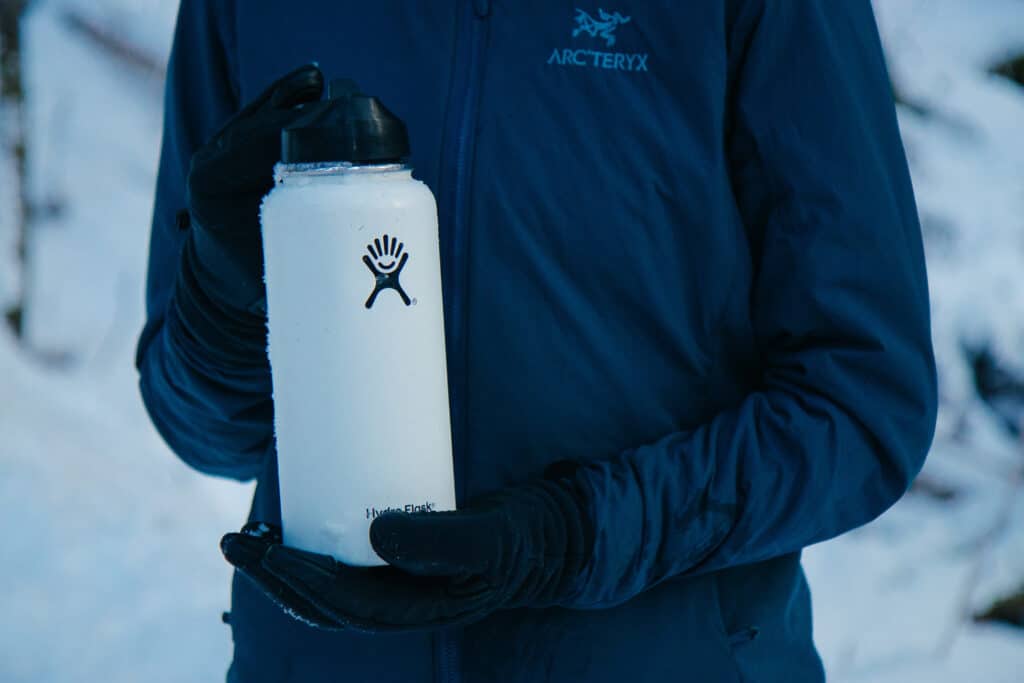
You may already own an insulated water bottle and not even know it. The very popular Hydro Flask bottles made of stainless steel are double wall vacuum insulated. This makes the water inside basically impossible to freeze from the outside.
If you still insist on wanting to use a hydration bladder instead, there are insulated models for purchase.
DAY HIKING BACKPACK
Getting all of the gear above is one thing, but being able to carry it all is quite another! It’s important to find the right backpack. Finding the best hiking backpack is comparable to finding the right shoes. Check the functionality, size, and fit. Then of course, also consider the style.
When you’re looking for a backpack for hiking, take into account what you will need and carry on your hike. If, for example, you use trekking poles (recommended), your sack should have a space for storing the poles when not in use. Similarly, look for a pack with a built-in water reservoir as well as pockets that allow you to easily access energy bars, a pocket knife, or a compass.
The right pack should also be durable so that hopefully you can use it for many amazing outdoor adventures.
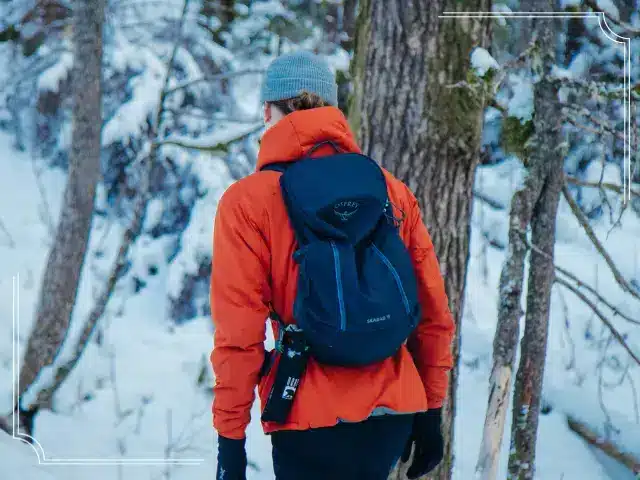
A daypack serves as a convenient place to store the layers of clothing that need to be shed as well. Never feel as if you need to tough it out once you feel too warm.
It’s best to take off unnecessary layers as soon as you can and stuff them in your pack for when the need returns.
When looking at daypacks, take into consideration how many layers you may need to fit inside it at once. That may include clothing and gear of another person you may be hiking with.
TREKKN’S SHORT LIST OF THE BEST DAY HIKING BACKPACKS
In an effort to help narrow the list and simplify your research, we are sharing our list of the top backpacks for day hiking. Note that this list is comprised of the best packs for various reasons, including an overall great, long distance hiking, and the best lightweight pack.
Related Reading: Learn more about the pros & cons of top hiking backpacks
-
$159.95Buy NowPros:
- Designed with recycled high-tenacity nylon
- BioStretch harness and wrap hip belt
- Airscape backpanel moves with hiker
- Lightweight and durable
- 22 Liter capacity
- Just under 2 pounds
We earn a commission if you make a purchase, at no additional cost to you.
07/14/2025 05:08 am GMT -
Buy NowPros:
- Lightweight and durable
- Constructed of high-tenacity nylon
- Continuous wrap padded hip-belt
- AirScape backpanel moves with hiker
- Capacity 20 Liters
- Weighs less than 2 pounds
We earn a commission if you make a purchase, at no additional cost to you.
-
$79.99Buy NowPros:
- Internal hydration sleeve
- Front zippered pocket and large main compartment
- Lightweight and durable ripstop nylon
- Capacity of 18 Liters
- Weighs less than 10 ounces
We earn a commission if you make a purchase, at no additional cost to you.
07/14/2025 11:03 am GMT -
$44.95Buy NowPros:
- Constructed of ultra-lightweight nylon
- Packs down to size of tennis ball
- Capacity of 20 Liters
- Weighs 2.5 ounces
We earn a commission if you make a purchase, at no additional cost to you.
07/14/2025 11:01 am GMT -
$177.03Buy NowPros:
- AirSpeed suspension
- Adjustable harness
- Internal hydration storage
- Stow-on-the-Go trekking pole attachment
- Raincover included
- Weighs 3.16 pounds
We earn a commission if you make a purchase, at no additional cost to you.
07/14/2025 05:01 am GMT -
$204.88Buy NowPros:
- Stitch-less edge taping technology in harness
- On-the-go trekking Z-pole storage
- Shoulder strap pockets
- Capacity 22 Liters
- Weighs 1.05 pounds
We earn a commission if you make a purchase, at no additional cost to you.
07/14/2025 11:01 am GMT
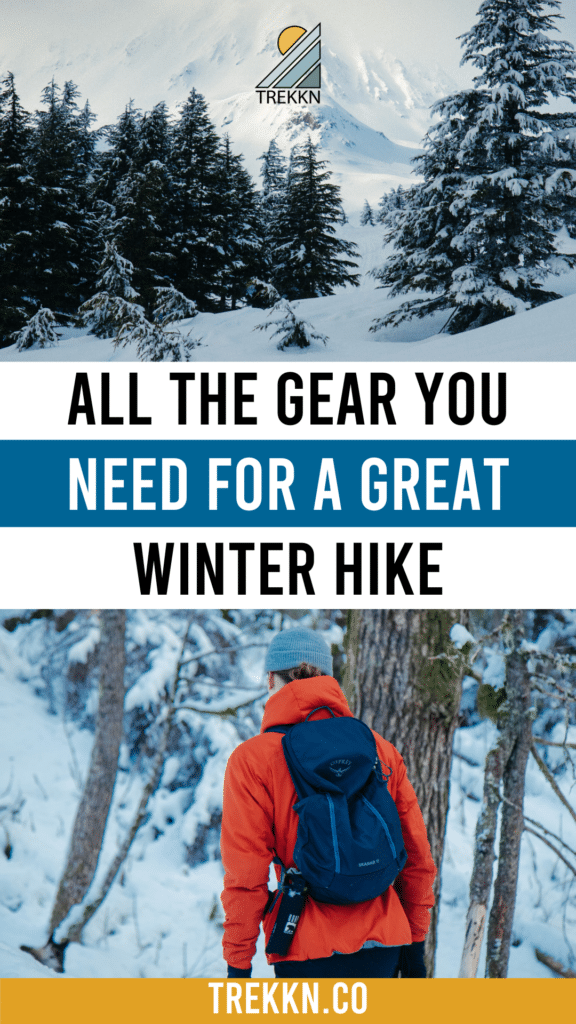

Josiah B gained invaluable experience while living on the road with his family, during which time he felt overcome with the desire to continue exploring. That search landed him in Seward, Alaska, where he currently resides. His love for the outdoors is welcome with open arms in the Last Frontier, and with an endless amount of hiking and backpacking to be done, he’s eager to share the best that Alaska has to offer.

